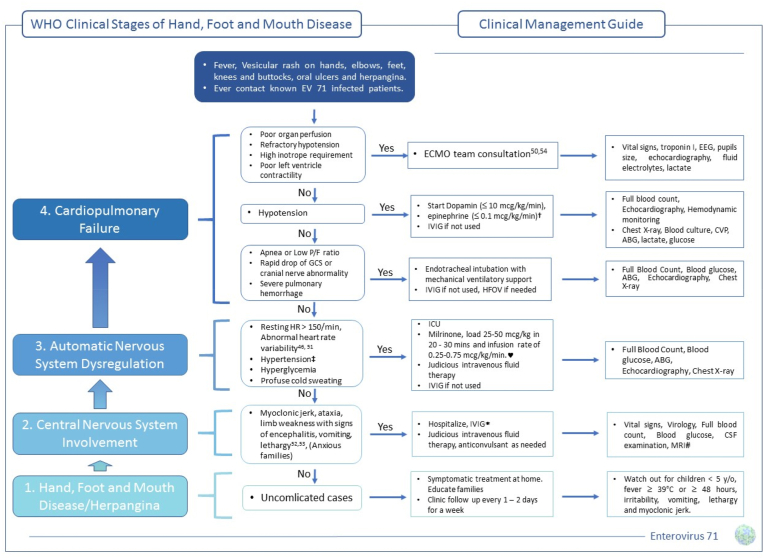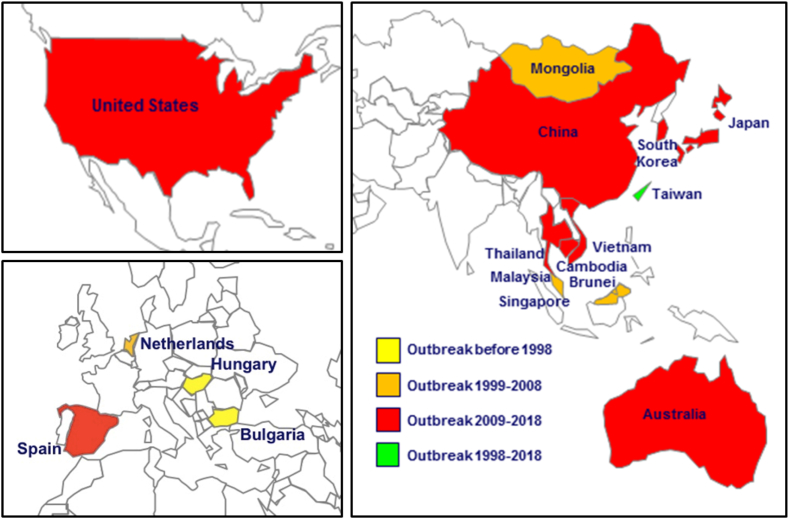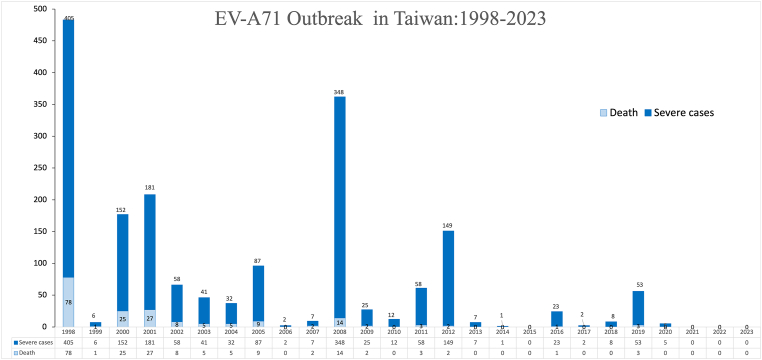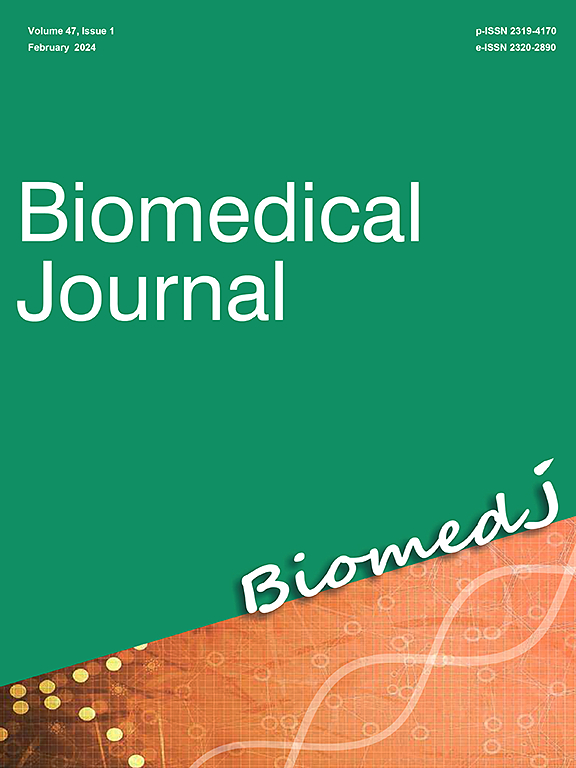Reflecting on the 1998 enterovirus outbreak: A 25-year retrospective and learned lessons
IF 4.4
3区 医学
Q2 BIOCHEMISTRY & MOLECULAR BIOLOGY
引用次数: 0
Abstract
Enterovirus A71 (EV-A71) infections are a major Asia-Pacific health issue. However, this infection can cause serious and potentially fatal neurological issues. We attempt to explain EV-A71's molecular virology, epidemiology, and recombination events in this review. The clinical and neurological signs of EV-A71 infections are well documented. The review discusses EV-A71 central nervous system infections' causes, diagnostic criteria, treatment choices, and prognosis. Some consequences are aseptic meningitis, acute flaccid paralysis, and acute transverse myelitis. These problems' pathophysiology and EV-A71's central nervous system molecular processes are examined in the review. EV-A71 infections must be diagnosed accurately for therapy. No particular antiviral medications exist for EV-A71 infections, thus supportive care is the main treatment. The study emphasises addressing symptoms including temperature, dehydration, and pain to ease suffering. EV-A71 CNS infections have different prognoses depending on severity. The review discusses long-term effects and neurological sequelae of EV-A71 infections. In conclusion, Asia-Pacific public health is threatened by EV-A71 infections. This review helps prevent, diagnose, and treat EV-A71 infections by addressing the mechanisms, diagnostic criteria, treatment choices, and prognosis. This study fully examines the challenges and considerations of managing and treating EV-A71 infections. It also recommends future research and development to generate effective viral infection treatments.



反思 1998 年肠病毒爆发:25 年回顾与经验教训。
肠道病毒 A71(EV-A71)感染是亚太地区的一个重大公共卫生问题。EV-A71 主要导致儿童手足口病(HFMD)。然而,这种病毒也会导致患者出现严重的、可能致命的神经系统后果。本综述旨在全面介绍与 EV-A71 相关的分子病毒学、流行病学和重组事件。文献广泛涉及 EV-A71 感染的临床表现和神经系统症状。本综述探讨的并发症之一是脑干脑炎,它可能是 EV-A71 感染的结果。脑干脑炎是指脑干的炎症,脑干是负责各种身体功能的重要区域。本综述探讨了涉及 EV-A71 的中枢神经系统感染的基本机制、诊断标准、治疗方案和预后。与 EV-A71 感染相关的神经系统并发症多种多样,并可能造成严重后果。这些并发症可能包括无菌性脑膜炎、急性弛缓性麻痹和急性横贯性脊髓炎。本综述深入探讨了这些并发症的病理生理学,揭示了 EV-A71 影响中枢神经系统的分子机制。EV-A71 感染的准确诊断对于适当的管理和治疗至关重要。EV-A71 感染的治疗方案主要侧重于支持性护理,因为目前还没有针对这种病毒的特效抗病毒药物。综述强调了控制发烧、脱水和止痛等症状以减轻患者负担的重要性。EV-A71 中枢神经系统(CNS)感染患者的预后会因并发症的严重程度而有所不同。本综述深入探讨了与 EV-A71 感染相关的长期预后和潜在的神经系统后遗症。总之,EV-A71 感染已成为亚太地区主要的公共卫生问题。本综述旨在加深我们对与 EV-A71 相关的分子病毒学、流行病学和神经系统并发症的了解。通过研究其潜在机制、诊断标准、治疗方案和预后,本综述有助于制定预防、诊断和管理 EV-A71 感染的有效策略。本文全面分析了与 EV-A71 和手足口病爆发有关的全球数据。随后的论述深入探讨了针对 EV-A71 疫苗的研发进展和战略制定。总之,本研究全面探讨了 EV-A71 感染管理和治疗中的潜在障碍和注意事项。此外,它还为未来的研发工作提出了建议,目的是为这种病毒感染制定有效的治疗方法。
本文章由计算机程序翻译,如有差异,请以英文原文为准。
求助全文
约1分钟内获得全文
求助全文
来源期刊

Biomedical Journal
Medicine-General Medicine
CiteScore
11.60
自引率
1.80%
发文量
128
审稿时长
42 days
期刊介绍:
Biomedical Journal publishes 6 peer-reviewed issues per year in all fields of clinical and biomedical sciences for an internationally diverse authorship. Unlike most open access journals, which are free to readers but not authors, Biomedical Journal does not charge for subscription, submission, processing or publication of manuscripts, nor for color reproduction of photographs.
Clinical studies, accounts of clinical trials, biomarker studies, and characterization of human pathogens are within the scope of the journal, as well as basic studies in model species such as Escherichia coli, Caenorhabditis elegans, Drosophila melanogaster, and Mus musculus revealing the function of molecules, cells, and tissues relevant for human health. However, articles on other species can be published if they contribute to our understanding of basic mechanisms of biology.
A highly-cited international editorial board assures timely publication of manuscripts. Reviews on recent progress in biomedical sciences are commissioned by the editors.
 求助内容:
求助内容: 应助结果提醒方式:
应助结果提醒方式:


